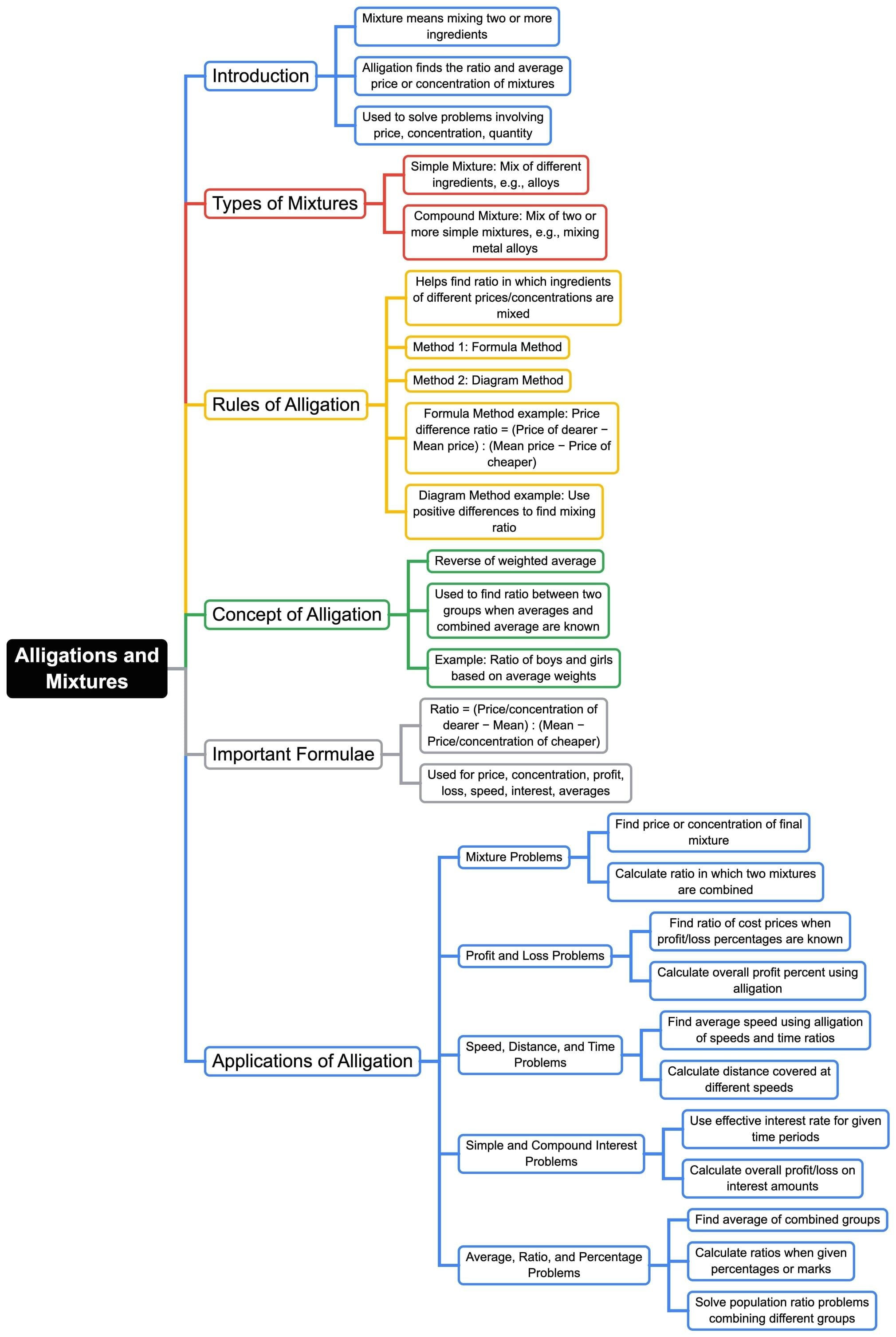CAT Exam > CAT Notes > Quantitative Aptitude (Quant) > Mind Map: Alligations and Mixtures
Mind Map: Alligations and Mixtures | Quantitative Aptitude (Quant) - CAT PDF Download

The document Mind Map: Alligations and Mixtures | Quantitative Aptitude (Quant) - CAT is a part of the CAT Course Quantitative Aptitude (Quant).
All you need of CAT at this link: CAT
|
167 videos|238 docs|95 tests
|
FAQs on Mind Map: Alligations and Mixtures - Quantitative Aptitude (Quant) - CAT
| 1. What are the key differences between alloys and mixtures? |  |
Ans. Alloys are homogeneous mixtures of two or more metals or a metal and a non-metal, which usually have properties distinct from the individual components. Mixtures, on the other hand, can be heterogeneous and consist of different substances that retain their individual properties. While alloys exhibit uniform composition and properties, mixtures may have varying compositions and can often be separated by physical means.
| 2. How are alloys created, and what are some common methods used in their production? |  |
Ans. Alloys are typically created through processes such as melting and mixing the constituent metals or elements together. The most common methods include casting, where the molten alloy is poured into molds, and forging, where the alloy is shaped under high pressure. Other methods include powder metallurgy, where metal powders are sintered, and welding, which can join different metals to form an alloy at the joint.
| 3. What is the significance of the phase diagram in understanding alloys and mixtures? |  |
Ans. Phase diagrams are crucial for understanding the phases present in an alloy at different temperatures and compositions. They provide valuable information about the melting points, solubility limits, and phase transformations that occur during heating or cooling. This understanding helps in predicting the behavior of alloys under various conditions, guiding the design and application of materials in engineering and manufacturing.
| 4. Can you explain the properties that distinguish a good alloy from a simple mixture? |  |
Ans. A good alloy typically exhibits enhanced mechanical strength, corrosion resistance, and improved thermal or electrical conductivity compared to simple mixtures. The properties of an alloy derive from the interactions between the atoms of the combined metals, leading to characteristics that are superior to those of each individual component. In contrast, a simple mixture may not show significant improvements in properties and can often be separated easily into its original constituents.
| 5. What are some practical applications of alloys in everyday life? |  |
Ans. Alloys are widely used in various applications due to their enhanced properties. For instance, stainless steel, an alloy of iron, chromium, and nickel, is commonly used in kitchenware and construction due to its corrosion resistance. Bronze, an alloy of copper and tin, is used in musical instruments and sculptures. Additionally, alloys like aluminum alloys are used in aerospace and automotive industries for their lightweight and strength characteristics, demonstrating their importance in modern technology and daily life.
Related Searches















